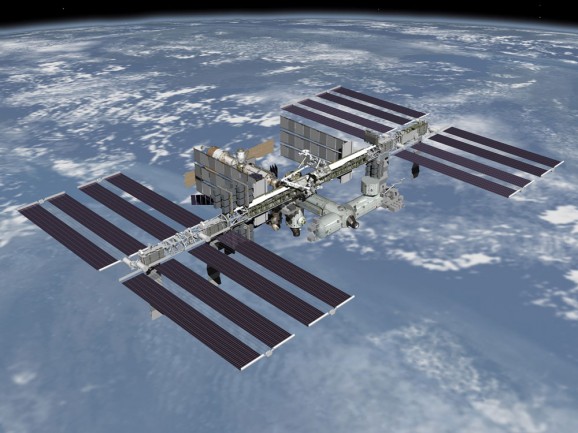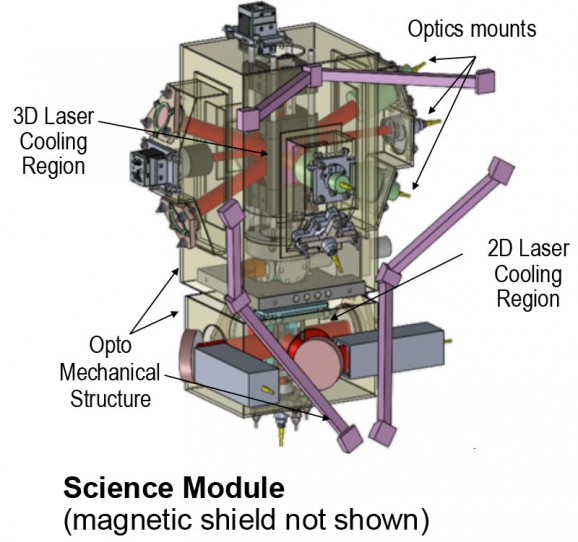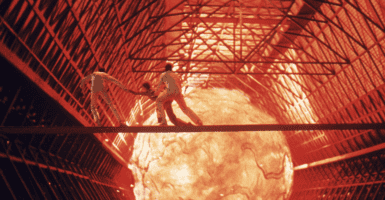ISS Cold Atom Lab Will Be The Most Frigid Place In The Universe
This article is more than 2 years old
 The ISS has its share of haters. There are many people who believe the station is a colossal waste of money (to the tune of $100 billion) and has never gotten down to the hard-core, life-changing proponents promised. Even so, Obama recently granted it four-year extension, so there is time to prove the skeptics wrong. One of the ways it might do that is with a new laboratory scheduled to become part of the repertoire in 2016 that will be the coldest known place in the universe. That may sound horrible, but it’s actually pretty awesome.
The ISS has its share of haters. There are many people who believe the station is a colossal waste of money (to the tune of $100 billion) and has never gotten down to the hard-core, life-changing proponents promised. Even so, Obama recently granted it four-year extension, so there is time to prove the skeptics wrong. One of the ways it might do that is with a new laboratory scheduled to become part of the repertoire in 2016 that will be the coldest known place in the universe. That may sound horrible, but it’s actually pretty awesome.
NASA’s Cold Atom Laboratory will be able to reach a temperature just one ten-billionth a degree warmer than zero Kelvin, or absolute zero (about -459.67 degrees Fahrenheit), the lowest temperature possible. You think North Face makes a parka for that? Space itself has an average temperature of -454.81, which is roughly the average temperature in Boston this winter.
Crazy science can happen with temperatures this low. Matter behaves completely differently, like being able to be in two places at the same time .Objects can have identity crises, acting as though they’re both waves and particles. Then there’s the whole solid, liquid, and gas thing? Yeah, not so much. In fact, it’s another form of matter that scientists want to study in the lab, something called Bose Einstein condensates, which happen when atoms get super cold and combine to form one wave of matter. These condensates could lead us to new scientific breakthroughs, like an atom laser and other advances in optics, electronics, and circuitry.
 Putting the lab in space means that unlike for Earthbound facilities, gravity isn’t an issue. Labs on Earth use a lot of energy fighting against gravity to hold molecules still for inspection, which they can only do for a second at a time. They also can’t get as cold as the Cold Atom Lab, where scientists will be able to hold molecules in place for observation for 20 seconds at a time. One of the first experiments planned is to mix two Bose Einstein condensates together. No one knows what will happen. I sure hope they live stream that one live. Scientists also plan on generating atomic waves big enough to be seen by the naked eye.
Putting the lab in space means that unlike for Earthbound facilities, gravity isn’t an issue. Labs on Earth use a lot of energy fighting against gravity to hold molecules still for inspection, which they can only do for a second at a time. They also can’t get as cold as the Cold Atom Lab, where scientists will be able to hold molecules in place for observation for 20 seconds at a time. One of the first experiments planned is to mix two Bose Einstein condensates together. No one knows what will happen. I sure hope they live stream that one live. Scientists also plan on generating atomic waves big enough to be seen by the naked eye.
In addition, NASA’s Physical Science Research Program will provide funding for seven proposals (three of which are from teams with Nobel laureates) for physics research in the Lab. Hopefully, the Cold Atom Lab will silence the naysayers and earn the ISS respect as a place where serious science goes down.












